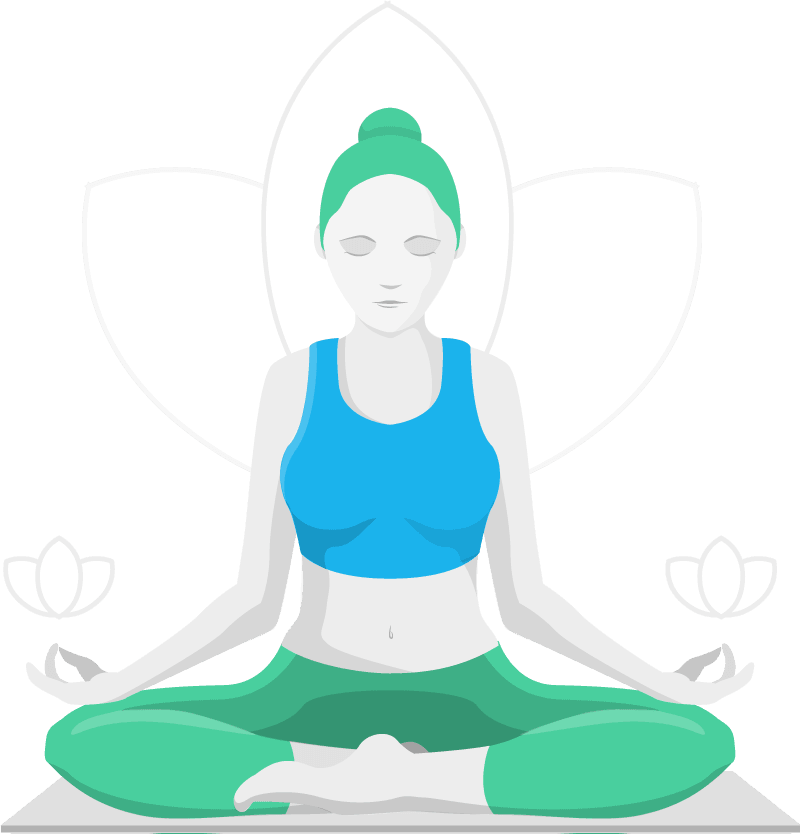Conscious Breathing
Impaired breathing affects thousands of children and adults in Australia. Symptoms of impaired breathing includes asthma, allergy, anxiety, increased ‘fight or flight’ response, sleep apnea, poor memory intake, learning difficulties from lack of sleep, poor concentration.
There is an intense amount of oxygen and energy at stake when we don’t breathe correctly. My aim here is to argue for ‘Conscious Breathing’ to be practised and modelled by educators and children in the early years – and this is the first point of call when teaching children self-regulation skills.
Before trying ‘mindful’, try this…
Impaired breathing is harming children (and educators) wellbeing.
This explores the link between breathing and self-regulation, the importance of this to children’s health and wellbeing and that this be modelled and practised in the early years.
How is impaired or incorrect breathing harming children? How do we fix this? How do you actually breathe correctly? So what do we know about Conscious Breathing?
What is Good Breathing?
Breathing is natural, universal, accessible and how we breathe is critical to our development. Correct breathing is referenced to “Conscious Breathing” (Olssen, 2010) and being:
-
Nasally (in and out)
-
Diaphragmatic,
-
slow, rhythmic, quiet,
-
with good posture.
How is this an issue?
Science and medicine have demonstrated that physical, emotional and cognitive issues arise from impaired breathing. Even with this knowledge, an inclusive, universal skillset delivering ‘breathing specific’ training for Educators in the early childhood sector is yet to be defined.
Incorrect breathing is harming children who ‘open mouth breathe’ as they are more likely to experience problems or abnormalities in the development of their face and jaw (Harari, D., Redlich, M., Miri, S., Hamud, T. and Gross, M., 2010). Open mouth breathing is associated with poor memory intake and changed cognitive responses. (Northwestern University, 2016)
Impaired breathing impacts over 460,000 asthmatic children in Australia. In 2017-18, an estimated 10% of children aged 0-14 were reported to have asthma as a long-term condition. (Australian Institute of Health and Welfare, 2020).
Impaired breathing is linked to anxiety and emotional problems in adults and children. One study found that emotional dysregulation is related to hyperventilation in adolescent girls (Henje Blom, E., Serlachius, E., Chesney, M.A. and Olsson, E.M.G., 2014).
How does this impact childrens mental health?
When supporting children’s mental health in an early childhood setting, it has been identified that a gap exists between evidence-based research (children’s mental health) and the training need for explicit skills. (Centre for Community Child Health, 2018).
This is concerning when according to data (ABS, 2016) the leading cause of death in children aged 5-17 was suicide. 27.6% were 14 years or younger with less than half who reported receiving help.
Mental health professionals agree that proactive, early prevention is considered the best strategy in an early childhood setting. Experts (Beyond Blue Ltd., 2007) recommend that:
- Educators are trained to “coach explicit skills in self-regulation”
- Resilience interventions should focus on both the child and environment
- Positive coping skills, self-regulation and self-efficacy included in key areas of focus.
A national study on child mental health literacy among Australian parents discovered; that:
two thirds of parents surveyed were not confident they could recognise signs of mental health issues. In addition, 1in 5 believed that a baby’s brain is too immature to develop social or emotional problems. 1 in 4 had no idea that children of primary school age could suffer from depression. 1 in 3 parents thought that mental health problems in kids are best left alone. (RCH National Child Poll, 2017)
In the current work force, 97% of educators are female, and who are or will soon become parents and come from diverse backgrounds and experience. It could be assumed that a portion of all educators share similar parental mental health literacy.
What obstacles
- There is limited, evidence-based research in self-regulation strategies reported (Australasian Research Summary, 2019).
- Existing obstacles to delivery of mental health initiatives around the country identified as being ‘…a plethora of initiatives, lack of consistent messaging and poor uptake around the country’. (Beyond Blue, 2007)
- A lack of recognition or requirement to observe, teach or assess children’s breathing in the EYLF.
- A universally safe, inclusive, understood language and skillset delivering breathing specific training for Educators and parents in an early childhood setting is yet to be defined.
What do we know?
- Many children and adults experience impaired, shallow breathing or open mouth breathing with known negative impacts and health implications. Primary research would include self-assessment and observation of breathing habits within the group
- Co-Regulation begins with adult’s ability to self-regulate (Early Childhood Australia, 2018)
- Educators currency as a primary role model has previously been ‘outsourced’ to yoga instructors or outside sources or more experienced peers to teach ‘mindfulness’ and calm down strategies.
- No assessable criteria within the NQS or EYLF drives the training need, leaving educators to seek alternate skills to ‘behaviour manage’ in order to meet their brief in supporting children’s self-regulation.
- The need to consider a shared language across all key supports for children. Languages used to build children’s, parents and educators’ mental health literacy is of utmost importance. (Oberklaid et al.,2020)
- Labels given to children’s behaviour or mental health problems must be avoided.
- A safe and appropriate language design to use for describing where children might be at any moment of their health or wellbeing would consider
“The Mental Health spectrum” which describes it as:
Healthy > Coping > Struggling > Unwell. (Centre for Community Child Health, 2018).
- Overcoming assumptions such as “we all breathe correctly all the time”.
- People may be concerned about Covid-19. An additional impact is that people may be scared to breathe in deeply, or may be suffering from prolonged anxiety or stress. This could trigger inaction or even poorer breathing habits.
What would motivation action?
Child Health: Being aware of signs of impaired breathing
Developing compelling knowledge of the impact of impaired breathing on physical, social and emotional development (including problems with the face, airways, lungs, deformities of teeth and jaw).
Self-Assessment and awareness of connections to feelings of anxiety, self-regulation and poor respiration (Olssen, 2014) could motivate our target public to act.
Teachers knowledge and active participation in the shared learning process has the greatest influence to build confidence in Educators and make a sustainable change.
References
Australian Institute of Child and Family Studies (26 Aug, 2020) [Webinar] Words matter: How to use frames effectively to advance child mental health. Retrieved from https://aifs.gov.au/cfca/webinars/words-matter-how-use-frames-effectively-advance-child-mental-health
Australian Bureau of Statistics. (2016) 3303.0 – Causes of Death, Australia, 2016. Canberra, Australia: Author. Retrieved from https://www.abs.gov.au/ausstats/abs@.nsf/Lookup/by+Subject/3303.0~2016~Main+Features~Intentional+self-harm:+key+characteristics~7
Australian Children’s Education and Care Quality Authority. (2018) National Quality Standard. [Web link] Retrieved on August 14, 2020 from https://www.acecqa.gov.au/nqf/national-quality-standard
Australian Institute of Health and Welfare. (2020). Australia’s children. Retrieved from https://www.aihw.gov.au/reports/children-youth/australias-children/
Australasian Research Summary. (July 2019) Self-regulation strategies. Retrieved from https://evidenceforlearning.org.au/the-toolkits/early-childhood-education-toolkit/australasian-research-summaries/self-regulation-strategies/#references
Beyond Blue Ltd. (2007). Building resilience in children aged 0-12. A practise guide. Pg 23. Retrieved from https://beyou.edu.au/media/pdfs/be_you_evidence_summary_2018_pdf
Centre for Community Child Health (2018). Child Mental Health: A Time for Innovation, Policy Brief Number 29. Murdoch Children’s Research Institute/The Royal Children’s Hospital, Parkville, Victoria. https://doi.org/10.25374/MCRI.6263990
Conscious Breathing: How do you breathe? Article retrieved on August 8 2020. [web link] https://www.consciousbreathing.com/learn-more/how-do-you-breathe/
Department of Education, Employment and Workplace Relations. (2009). Belonging, being and becoming: The early years learning framework for Australia. [EYLF] Retrieved from https://www.acecqa.gov.au/
Early Childhood Australia (2018). There’s no such thing as a bad kid says self-reg expert. [blog] Retrieved from http://thespoke.earlychildhoodaustralia.org.au/no-thing-bad-kid-says-self-reg-expert/
Harari, D., Redlich, M., Miri, S., Hamud, T. and Gross, M. (2010), The effect of mouth breathing versus nasal breathing on dentofacial and craniofacial development in orthodontic patients. The Laryngoscope, 120: 2089-2093. doi:10.1002/lary.20991
Henje Blom, E., Serlachius, E., Chesney, M.A. and Olsson, E.M.G. (2014), Breathing in adolescent girls with emotional disorders. Psychophysiol, 51: 412-418. doi:10.1111/psyp.12188
Martel, J., Ko, Y. F., Young, J. D., & Ojcius, D. M. (2020). Could nasal nitric oxide help to mitigate the severity of COVID-19?. Microbes and infection, 22(4-5), 168–171. https://doi.org/10.1016/j.micinf.2020.05.002
Northwestern University. (2016, December 7). Rhythm of breathing affects memory, fear: Breathing is not just for oxygen; it’s also linked to brain function, behavior. ScienceDaily. Retrieved September 1, 2020 from www.sciencedaily.com/releases/2016/12/161207093034.htm
Oberklaid F., Rhodes A., Price-Robertson R., (2020, August 12) [webinar] Words matter: Getting the language of child mental health right. Retrieved from https://aifs.gov.au/cfva/events/words-matter-getting-language-child-mental-health-right
Olsson, A. (2014) Conscious Breathing: Discover the power of your breath [Kindle version]. Retrieved from Amazon.com.au
Royal Childrens Hospital National Health Poll (2017). Child mental health problems: can parents spot the signs? Retrieved on August 15 2020. https://www.rchpoll.org.au/wp-content/uploads/2017/10/RCH-National-Child-Health-Poll-Report_Poll-8_Final.pdf
The Brave Foundation (2020) Video resources to help children and teenagers cope with stress in the time of COVID-19. Retrieved from https://www.brave-online.com/coping-with-stress-in-the-time-of-covid-19/

Without Oxygen, we die.
